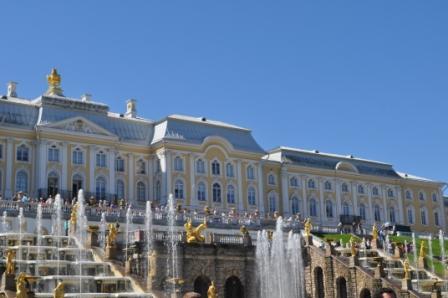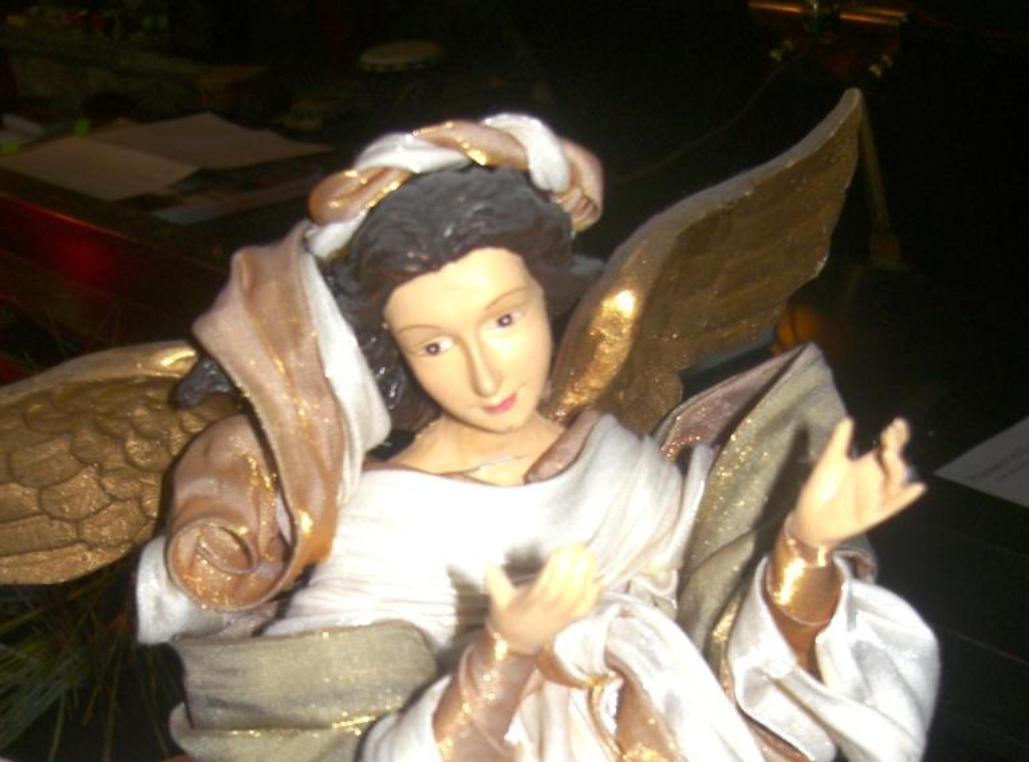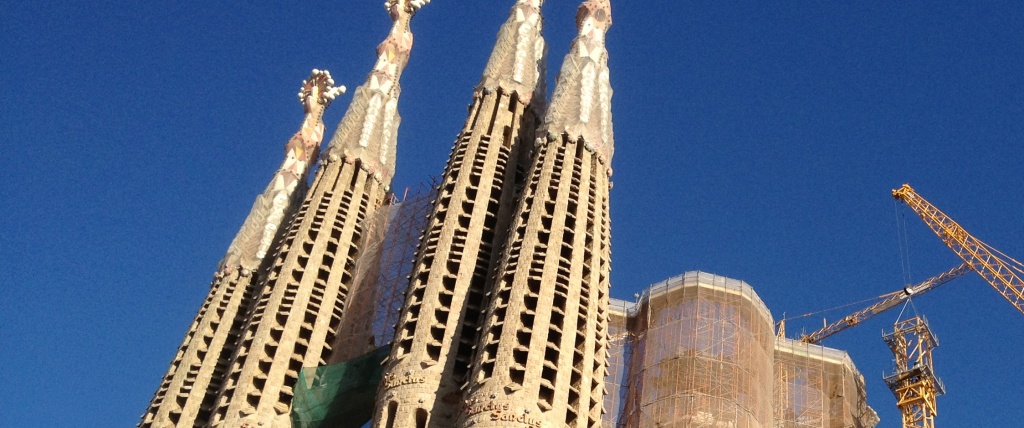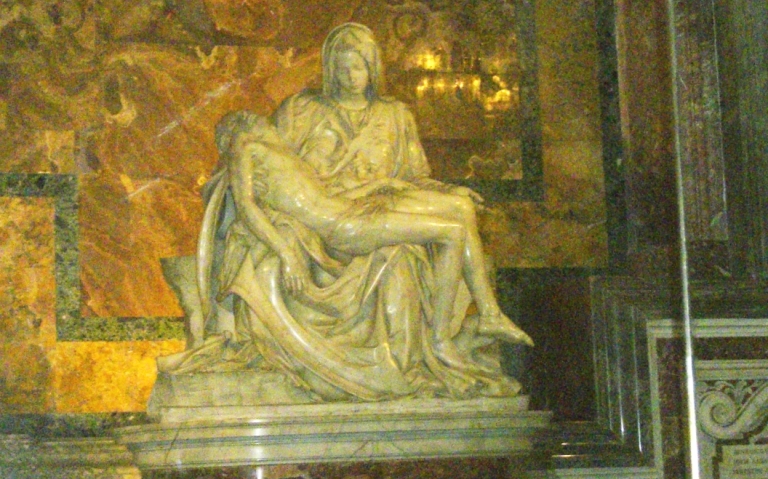Summer in St. Petersburg: white nights, cruise ships, guided tours… and crowds everywhere. Museum queues are reminiscent of bread lines during the Communist years, tour groups are marched through the palaces as if on a conveyor belt, and in some rooms at the Hermitage, you have to practically jump up and down to catch a glimpse of the paintings. On the bright side: 24 hours of daylight, no snow, and some of the world’s iconic palaces, art museums, and historic sites.
St. Petersburg: A City of Water
St. Petersburg, built on what was originally swamp and marshland, is all about water. The Gulf of Finland gives it access to the Baltic Sea, the Neva River runs through the city, and a network of canals meander about its neighborhoods. With so much water, it only makes sense to take at least one opportunity to see the city from the river, the sea, or both.
On Your Bucket List Because…
- Are you kidding? A palace that eclipse Versailles? The Treasures of the Hermitage? Whose bucket list isn’t this on?
- Peterhof was designed to be approached by sea. This tour lets you see it as Peter the Great intended.
- Good for history lovers, art lovers, lovers of luxury and palaces.
One of the best approaches is to take a hydrofoil from the Hermitage, on the Neva River, to Peterhof, on the Gulf of Finland. The 45-minute 18-mile ride avoids nasty St. Petersburg traffic. Starting at the docks across the street from the main entrance to the Hermitage, you’ll pass the Peter and Paul Fortress, built in 1706 to be the heart of — and the earliest defense of –Peter the Great’s original city. You’ll then follow the river past St. Isaac’s Cathedral, along with a few lesser palaces, churches, and museums. The Neva lets out into he Gulf of Finland, where you’ll pass the harbor and cruise ship docks. A new harbor complex is being built to house even more cruise ships. It will have seven berths to handle up to 12,000 passengers a day (which means even longer lines at the palaces.) The 450-hectare complex will include residences, along with recreational space, shopping, and businesses.
Peterhof: Palace and Fountains of the “Russian Versailles”
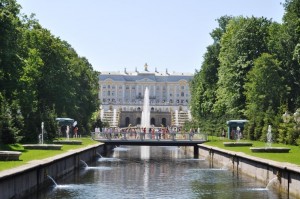
When the hydrofoil arrives at the dock for the Grand Palace and Gardens of Peterhof, it becomes evident that Peter’s palace is every bit as much about water as his namesake city. Peterhof was in fact designed to be approached from the sea, which is apparent as soon as you dock and look up the long, straight Grand Cascade, which flows from the fountains in front of the palace down to the pier. It’s one of the largest fountain clusters in the world. On either side of the channel are paths, trees, and gardens, with more gravity-fed fountains lined up in symmetry, giving a sense of the European aesthetic that Peter the Great was so intent on importing to Russia. Peter intended his palace to rival Versailles, but many visitors think that it far outdoes its French inspiration.
The lines to get inside were long on an unseasonably hot late June day: I wished I’d brought a brimmed hat as our group inched toward the entrance. Once inside, the group was shuttled through the seemingly endless series of grand rooms. It’s interesting as you pass through a succession of rooms to see the various decorative styles that the successive czars and czarinas preferred, from gilded Baroque to austere Dutch and everything in between. There are marble staircases and gilded ceilings and statuary and art everywhere, and you will not have the time to take it all in. But perhaps the most striking fact of all is that although this palace was heavily damaged and looted during World War II, it — and its contents — have been painstakingly restored down to the most minute detail. The scale of the endeavor seems unimaginable, and in a way, the restoration seems more impressive, if that’s possible, than creating the original in the first place.
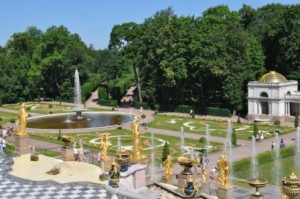
For me, however, Peterhof’s crowning glory is its parks and fountains. Scores of fountains, gilded and glimmering, run from May to October. The paths through the woods are not jammed with crowds. I’d recommend starting the day with a tour group going through the palace, then leaving the group to spend time in the parks and among the fountains, with a return by hydrofoil when you are done.
Practicalities
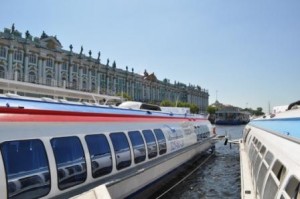
Note that admission is charged for the lower park. Visitors must tour the palace with a guide; to participate in an English tour, you have to make arrangements in advance. (If you’re on a cruise ship, this will be done for you; St. Petersburg hotels can help independent travelers book onto a group tour.) The palace is closed on Mondays and on the last Tuesday of the month.
Hydrofoil stations are found across from the Hermitage, and near the Academy of Sciences and the Senate Building. You’ll find the Hermitage boat docks just across the street from the museum’s entrance. Independent travelers can arrange the hydrofoil ride easily enough; it’s first come, first-served, and you just buy your ticket and hop on. A one-way ticket to Peterhof is 450 Rubles (about $15 U.S.); discounts are available when you buy your return if you’ve hung on to your original ticket.
A note for cruise ship passengers on shore excursions: A one-way hydrofoil ride is included in many of the itineraries to Peterhof.
